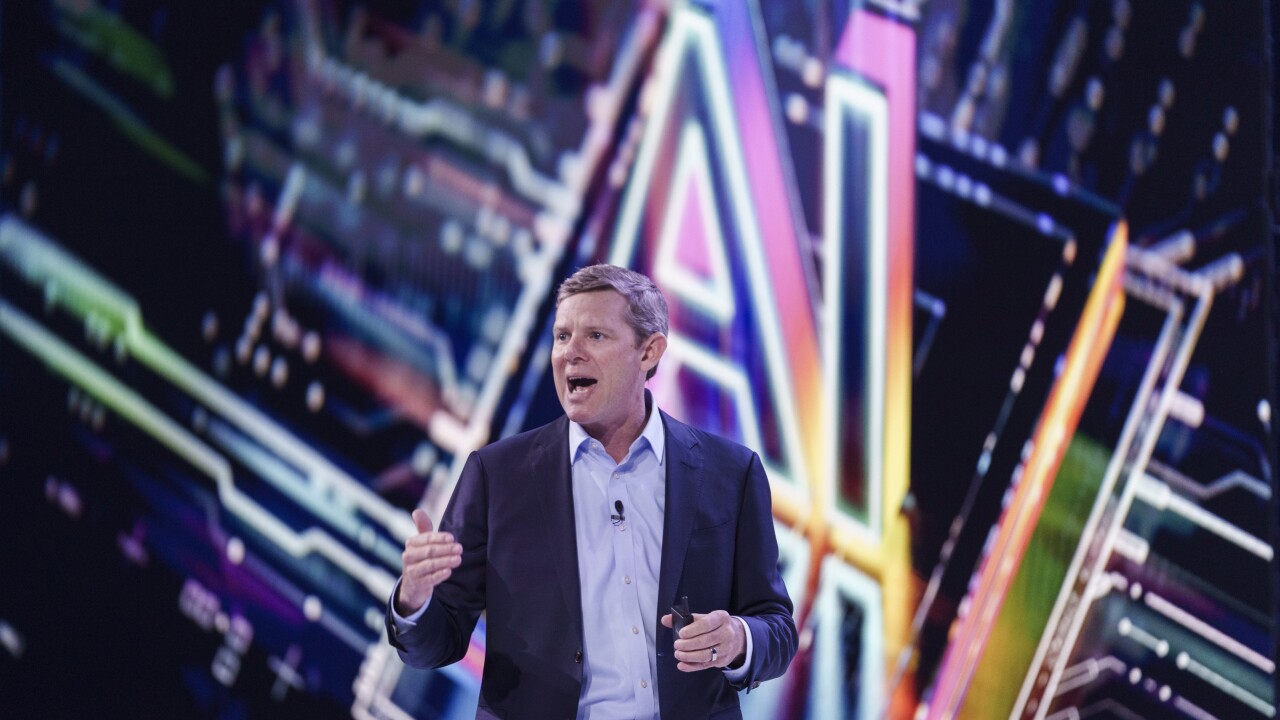Football season may be over, but the game is just getting started for the payment companies that saw the Super Bowl as their own proving ground.
Fans who watched the big game got to experience new technology in nearly everything they touched, whether they realize it or not – even if they didn't attend in person.
ACI Worldwide and Domino's, for example, boasted their ability to handle fans' gameday appetites for orders placed online. ACI powers Domino's' AnyWare digital ordering platform, as well as the Easy Order pizza emoji, which is Domino’s buy button.
"We work with [Domino's] to understand the business, things like where their stores are, what time zones they are in, etc. to make sure our processing throughput and resilience meet the demand up to midnight on the west coast and beyond 3 a.m. on the east coast," said Peter Price, vice president of data center operations for ACI Worldwide.
Domino's, receives about half of its $4.1 billion in yearly sales through digital channels, according to Michael Davis, vice president of international technology operations and store technology strategy for Domino's. The pizza chain was able to handle the large amount of orders that came in during the day, along with periodic spikes, he said, though ACI and Domino's did not provide gameday numbers.
"What's interesting about the Super Bowl is there are compressed periods of time where there are peak utilizations," Price said. "Much like there's huge uptake in water around halftime, there was 'jagged tooth' spikes right before and around halftime."
ACI, which is expanding its ability to process variable volumes of
There is a downstream benefit for ACI to demonstrate it can handle unusual changes or increases in volume during special events or high impact days, Price said.
"We want merchants to know that they may run a coupon or a promotion and that's a non-event for us," Price said. "Any spike in volume is OK."
Verifone and ParkHub also used the Super Bowl as an opportunity to test their own limits. Parking lot attendants at the site of the Super Bowl, Levi's Stadium, collected fees and validated prepaid parking vouchers with Verifone's mobile point of sale device, which is integrated with ParkHub's software.
George Baker, the founder and CEO of ParkHub, called the Super Bowl deployment "a great success," though like ACI, he didn't release hard data.
ParkHub also handles technology that monitors vehicles in parking lots based on speed and direction. That enables staff at venues to manage traffic volume as well as predict spikes at concession stands and other payment locations.
"It's a way to be proactive about bottlenecks," Baker said. "It allows stadiums and operations to make data informed on arrival patterns and ebbs and flows of parking demands."
ParkHub's clients also include the Dallas Cowboys, which uses the parking payment and tracking technology at AT&T Stadium in Arlington, Texas.
The Super Bowl deployment is an example of how mobile payment is becoming more prevalent in all sectors, according to Joe Mach, senior vice president and manager of vertical solutions for Verifone.
"It starts with one niche and drives into other areas," Mach said.
Verifone and ParkHub hope their Super Bowl performance will help draw business from other sporting events or facilities. ParkHub is also looking to grow beyond sports parking.
"We're hoping to get into the municipal space or daily parking transactions," said Jarrod Fresquez, chief marketing officer of ParkHub.
The long-term impact of the strategy as a client or consumer lure can be mixed, said Gareth Lodge, a senior analyst at Celent.
"The impact does fade away. I suspect, other than some press releases, very little will concretely happen as a result," Lodge said. "On the flip side, it's about getting the word out there, showing real life examples. Showcasing at key events is critical in generating awareness."





